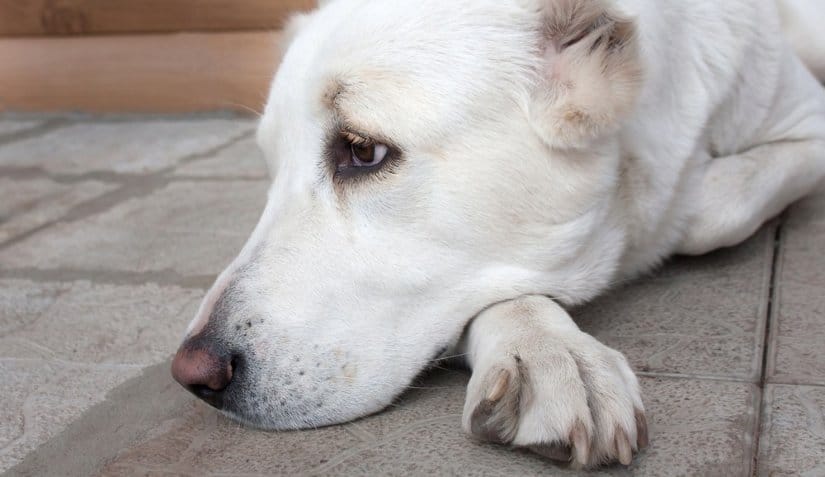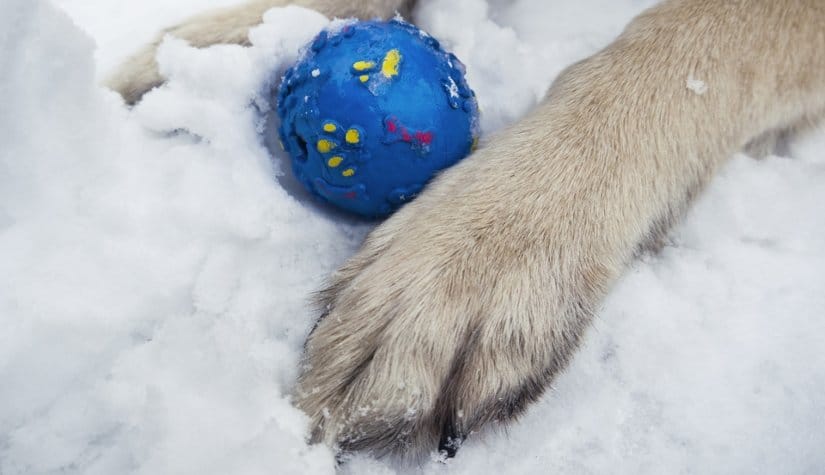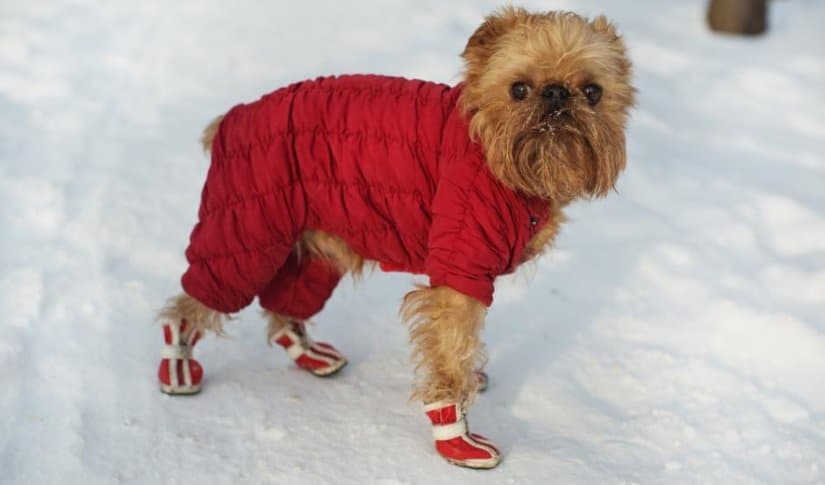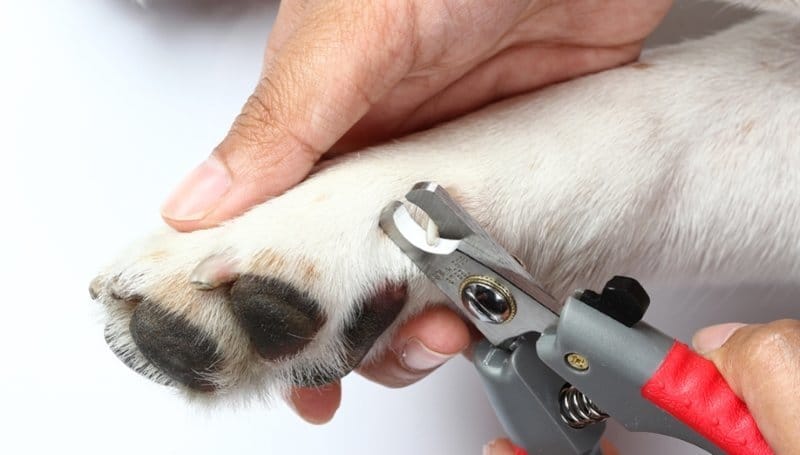As a pet parent, you want to do what’s best for your fur ball. Nonetheless, even the most dedicated pet parents forget about is protecting those little paws from cold or heat. These paw problems might not exhibit a significant issue in the beginning but if you ignore them, your poodle is not going to have a comfortable time walking around.
According to Dr. Deborah Mandell, dog’s paws are fairly sturdy and they can stay that way for a long time. But there is a limit to what they can put up with in the long run. One of the major concerns here for the pet parents is that once these issues kick in, dealing with them can become an eschewing job.
The healing factor can be heavily influenced because your pet needs to walk around a lot. This means that the affected area will not have enough time to heal because the paws are always in use. They will not get much rest for healing purposes.
In the following text, we will share some of the tips from our veterinarian experts. These tips will guide you about how to make sure that your pooch doesn’t have to suffer in winter or summer.
-
1. Regularly wipe your dog’s paws in winter
The roads and paths can be fully covered with ice and snow because of the winter. But there can be other chemicals and salts in that snow and ice as well. These external elements have full potential to damage the paws of your pet. For this reason, it is important that you keep those paws properly cleaned and wipe them thoroughly using a paw washer.
You have to do so each time they come indoors from the cold. Getting rid of the ice, salt and dirt from their paws will keep your pet away from developing any irritations. Dr. Mandell also urges on the same fact that cleaning these paws will prevent any further complications.
-
2. Beware of those pesky ice patches
During the winter times, most of the dogs love to play in the outdoors with snow and ice. But you have to be extremely cautious here. Dogs can also slip just like us on that slippery ice. If there are some sharp edges, your dog’s paws will get hurt due to cuts.
As per Mandell, you need to keep your dog from playing on that slippery ice because it will cause an injury. These injuries can take a toll because dogs need to walk around on their paws and they will experience a lot of pain and anguish when they set their injured paw on the ground.
-
3. Keep an eye on your time spent in the outdoors during winter
Dogs are also animals like humans and for this reason, they shouldn’t be outside in the cold for long periods. Frostbite can creep in pretty quick and it can influence your dog’s paws and even other body parts as well.
As per Mandell, if you keep an eye on the time you have spent in the outdoors during winter then this wouldn’t be an issue. If your dog is running around in the snow for some time then the cold temperature is not going to be an issue at all. So quit the idea if you were thinking that you should not take your dog outside in sub-zero temperatures. Nevertheless, make sure that you keep them in your houses for winter and only spend a little time outside.
-
4. Use paw wax or dog boots for your pup
As compared to human feet, dog paws are properly equipped to handle snow and cold. But your pup will still benefit a lot from some extra protection. Dr. Katherine van Ekert suggests that if you are walking with dog in the snow then put dog boots on their paws.
These booties can also come with some sort of traction that will prevent your dog from slipping. Some dogs don’t like wearing booties and if your dog also dislikes them then you can use paw wax instead. However, Dr. van Ekert says that using wax can be a bit trickier because it will wear off very quickly and there is a case that you might not have put it on their paws adequately.
-
5. Be careful of that hot asphalt
Now let’s talk about the summer. This is the time when your dog spends most of the time outdoors with you. When the temperatures increase, so do the paw hazards. Asphalt is one of the surfaces that can absorb a lot of heat from the sun.
According to van Ekert and Mandell, if you cannot walk barefoot on the asphalt during summers then similar is the case with your pooch. So makes sure to avoid walking your dog on any of those paved surfaces in the scorching sun. Pad burns are one of the biggest issues that your dog’s paws have to face.
Even if you are very careful in this scenario your dog might still end up spending too much time on the hot surface. Therefore, you should check their paws regularly for any signs of pad burns. Mandell informs that some of the signs including paw licking, limping, bleeding and discolored pad.
-
6. Regularly monitor paws after each leash walking session
Hiking and leash walking session can be highly productive activities for you and your dog. But that rough terrain and all the unexpected objects in the way can make the way dangerous for your fur ball. Keep an eye on the path that your dog carves for itself. There is a slight chance but your dog has a tendency to accidentally step on different things such as glass and inflict an injury. You can use you the leash to keep them on the right track.
Mandell and van Ekert also say that thorns, sharp objects or burs can get caught up in their paws. In the case of deep embedment, a vet will sedate your pooch and remove it from the paw. In case of bleeding, according to Mandell, you must apply pressure to stop the bleeding and call in a vet.
-
7. Ensure to take walks during the cooler times of a day
Summer times also mean that you need to reschedule the time of your walks. The time needs to be a lot more comfortable both for you and your dog too. Both van Ekert and Mandell say that during the summer times morning and evening walks are the best. Just make sure that your walks are short. You must also use a lot of water and provide it to your pooch as well. Supplementing with those indoor play sessions will be a good idea.
-
8. You need to get your pooch comfortable with paw touching
Most of the dogs don’t like when humans touch their paws. This fact is supported by van Ekert as well. This can be significantly problematic if you want to groom your pooch or if there is a case of injury. However, a puppy doesn’t have such problems. So, it is important to get the puppy used to paw meddling and nail trimming. Mandell says that if you get a puppy used to with these two activities everyone’s life gets very easy once the puppy grows.
-
9. Keep your dog’s claws trimmed
The frequency of the trimming of the claws or nails of your dog is a factor dependent on its breed as well as lifestyle. If the nails are long they will be a lot easier to split or tear off. While this experience can be extremely painful it can also initiate infection or disease according to Mandell. On the other hand, van Ekert says the nails of some dogs are naturally filed down particularly if they walk on asphalt or pavement. But you still have to keep an eye on that dewclaw which is the nail located higher on the leg.
-
10. Floor cleaners can also be a problem
There are some floor cleaners that might comprise of harsh chemicals. These chemicals are not good for the paws of your dog, van Ekert suggests. Your pooch’s paw skin is at high risk of absorbing these chemicals from the floor. Due to wetness, your dog will also want to lick the stuff and ingest it which becomes even more dangerous.
-
11. Monitor the paws regularly
If you monitor your pup’s paw regularly then there are better chances that you will catch any issue early. Van Ekert says that if there are some signs of redness then this indicates that the paw is developing an infection. Mandell urges to have a close eye n the behavior of your dog. Your dog will run like heck and the pads take the toll of it. All you have to do is examine their feet and behavior regularly and make it a part of your daily routine.
-
12. Cover dietary deficiencies
When it comes to paw problems, dietary deficiencies can also play a role. These deficiencies can cause cracked skins on the paw pads. If your Fido is not consuming enough selenium and zinc in its diet then its skin will not heal in a timely fashion.
For this reason, you need to add these supplements into the diet of your pooch. Small sized dogs require approximately 50 micrograms selenium along with 2.5 milligrams zinc on a daily basis. On the other hand, large sized dogs will need 100 micrograms selenium and 5 milligrams zinc in their diet.
Prevention is a better option than cure
In most cases, prevention is better than cure and similar is the case with the paw problems. As we have mentioned that your dog needs to move around using its paws and sour paws will have a very little resting time. Therefore, it is better for you to prevent the issue from occurring in the first place instead of looking to cure it afterward. You have to guard your dog against frostbites, pad burns as well as torn nails.




Thank you for the useful information. My dog was constantly plucking at her paws. I now wipe with a warm, clean washcloth.